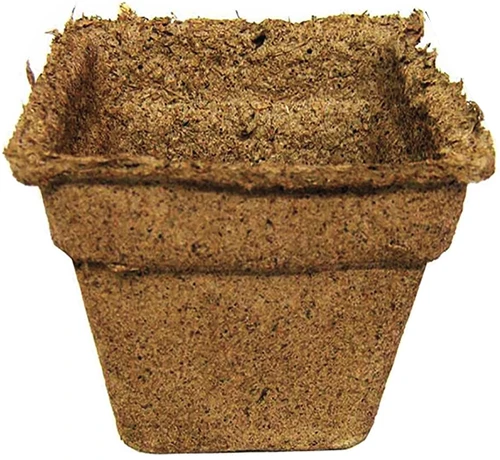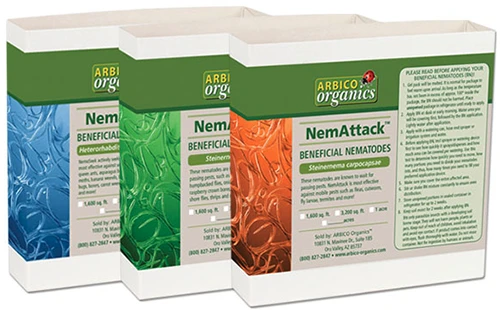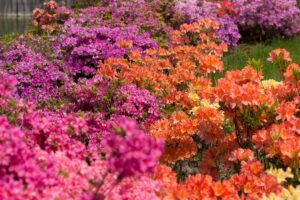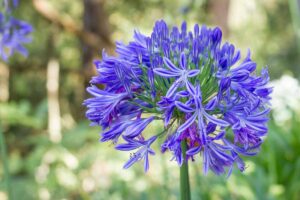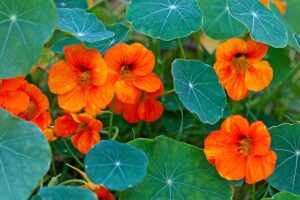Iris douglasiana
Those flamboyant bearded irises may get most of the attention, but the not-so-humble Douglas iris is ready for more time in the spotlight.
A North American native, this spectacular species grows in coastal California and Oregon.
But it makes a superb ornamental for those across North America who need something showy for a shady spot or a plant that can deal with that perennial garden challenge: heavy clay soil.

We link to vendors to help you find relevant products. If you buy from one of our links, we may earn a commission.
This is going to sound silly, but I remember the first time I saw a big wild patch of Douglas irises.
I was on a trip to northern California in my late teens and I was absolutely convinced that someone had planted some irises and they had escaped the garden somehow.
It just didn’t compute in my brain that a wildflower could be so big and beautiful.
Believe it, baby.
There’s a lot of awesome stuff to know about these plants, so if you’re ready to learn more, here’s what we’ll be discussing:
What You’ll Learn
These plants have a fascinating, long history, not only as an ornamental but as a valuable food and tool. Surprised? There’s more where that came from. Let’s take a look:
What Is Douglas Iris?
Douglas irises (Iris douglasiana), also known as western or mountain irises, are native to the Pacific Coast of North America.
You’ll sometimes see them called Pacific or Pacific Coast irises, but that’s a more general term for the native irises that grow in coastal California, Oregon, and Washington.
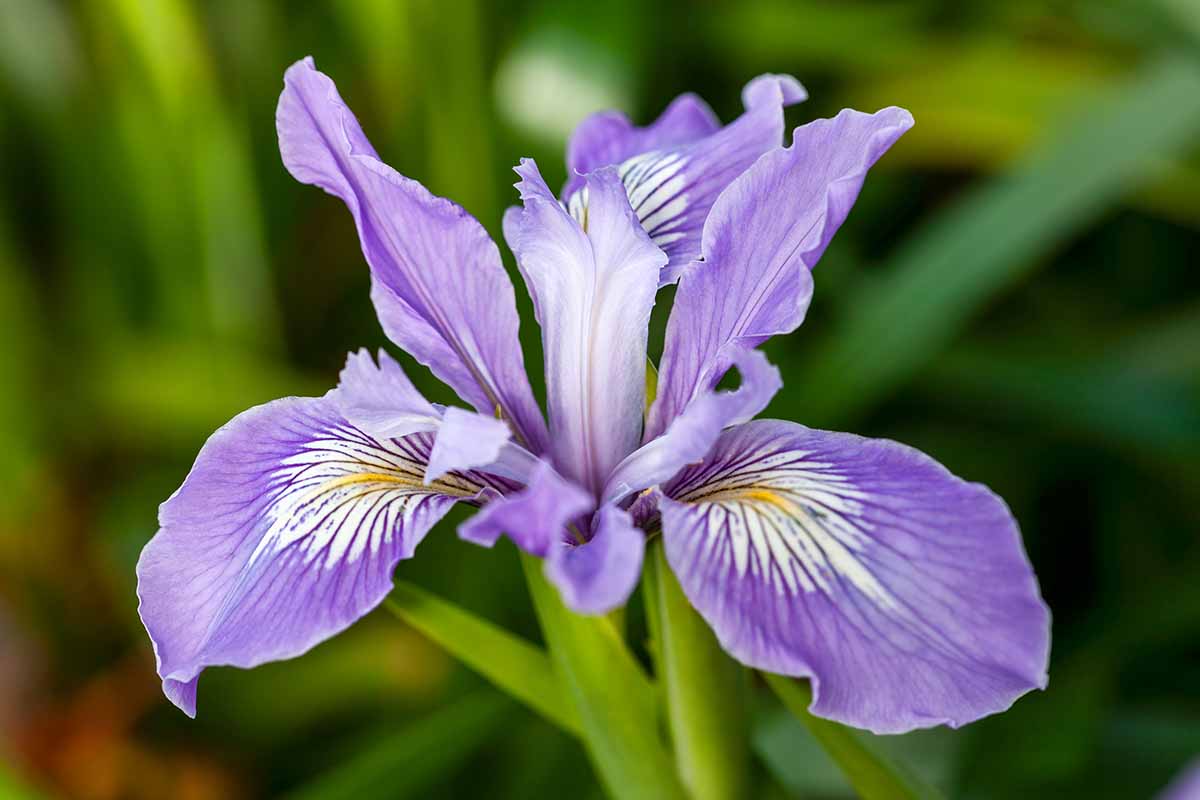
These “Pacific” irises include those in the Californicea series, which is part of the subgenus Limniris, a group made up of “beardless” irises.
These “Pacific” species are bowl-tube (I. macrosiphon), Fernald’s (I. fernaldii), golden (I. innominata), Hartweg’s or Sierra (I. hartwegii), Munz’s (I. munzii), Purdy’s (I. purdyii), Shasta or Dyke’s (I. tenuissima), Siskiyou (I. bracteata), Thompson’s (I. thompsonii), tough-leaf (I. tenax), and yellow leaf iris (I. chrysophylla).
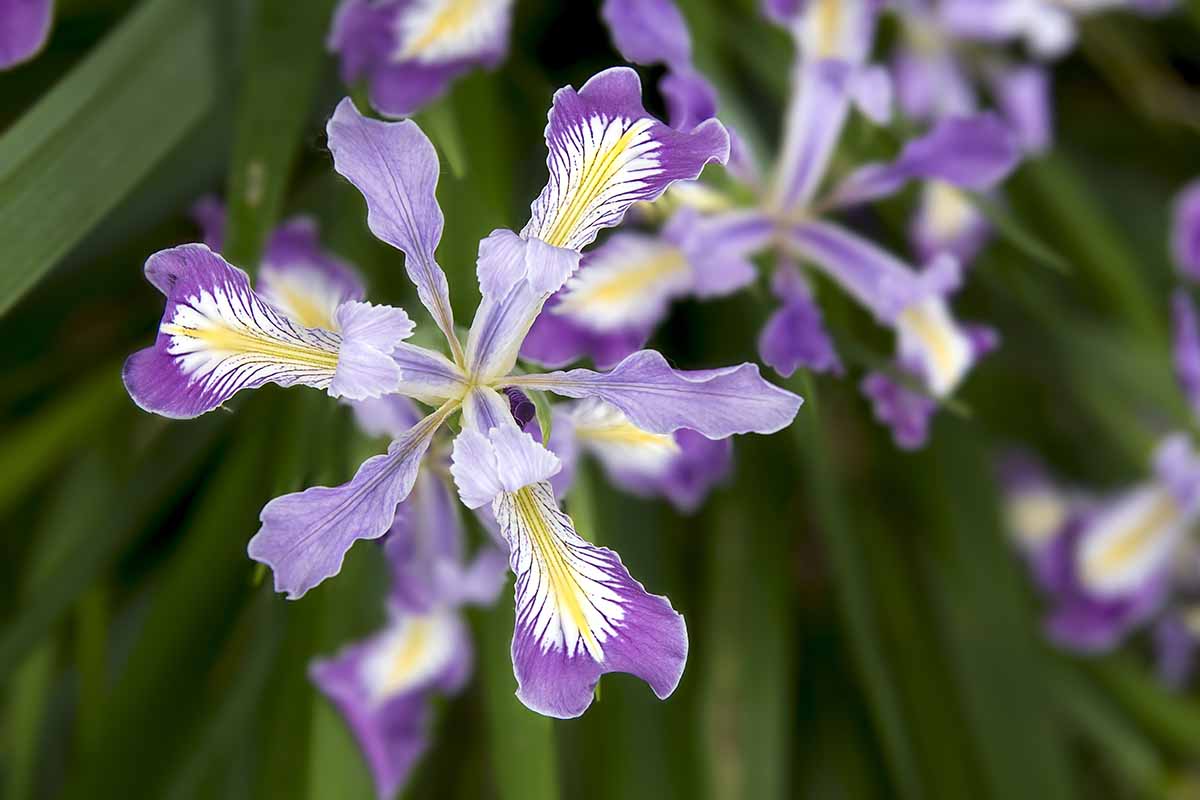
Most of these are much less common in nurseries, but you may find them from time to time, particularly the tough-leaf and golden species.
These particular species can be grown similarly to I. douglasiana, so don’t worry if you end up with one accidentally.
Also, wild irises readily hybridize with each other, so if you cultivate one that you dig up on your own or someone else’s property (with permission), it might be a bit unique from the standard species. That’s part of the fun!
Douglas irises grow in a narrow 700-mile-wide band along the coast starting in central Oregon and heading south through southern California.
They’re hardy in USDA Zones 6 to 10. If you happen to find a wild Douglas iris outside of the narrow band in which it grows, it’s likely a natural hybrid.
Mountain irises are flowering evergreens that generally stick to lower elevations. These plants were named for David Douglas, a Scottish botanist.
He explored the Pacific Northwest for a few years starting in 1824. During his travels, he “discovered” this plant, among others named for him, such as the Douglas fir.
I use the term “discovered” loosely as native populations living in the region had been using the plant for food, tools, and medicine long before Mr. Douglas came around.
The sword-shaped greenish-yellow to dark green leaves, which grow in pairs, are an attractive, clumping accent in the garden even when the flowers aren’t present.
When the flowers do emerge in spring, they range from deep reddish or bluish purple to pale purple. Rarely, they might be entirely yellow or white.
The petals have yellow, white, or orange bases at the bottom center of the lowest petal. These colored areas at the base of the petals are signal patches to guide pollinators into the flower.
The petals also have contrasting venation, which means the veins are a different color than the surrounding tissue.
Each flower branch can have several flowers, and they’re generally shorter than the leaves, with the blossoms just protruding above the framing foliage. Flowers tend to cluster in groups of two or three.
Hummingbirds and insects love to feed on them when the flowers are in bloom, typically in spring, though some cultivars bloom as early as January and others as late as July.
Some cultivars will bloom a second time during the autumn, including ‘Wishing,’ ‘Point Santa Cruz,’ ‘Canyon Snow,’ and ‘Baby Blanket.’
‘Premonition of Spring’ flowers from September to April in most regions, though it tends to be a bit more susceptible to diseases. Still, if you want some really great color during the cold months… maybe worth the risk!
The seeds, which form after the flowers fade, attract birds. Plants take about two years to mature and produce these seeds.
Cultivation and History
As I mentioned above, the beautiful Douglas iris and its fellow native iris friends that grow in the region – I. tenax, I. munzii, and I. innominata, among others – were and are valuable to indigenous people living in the region.
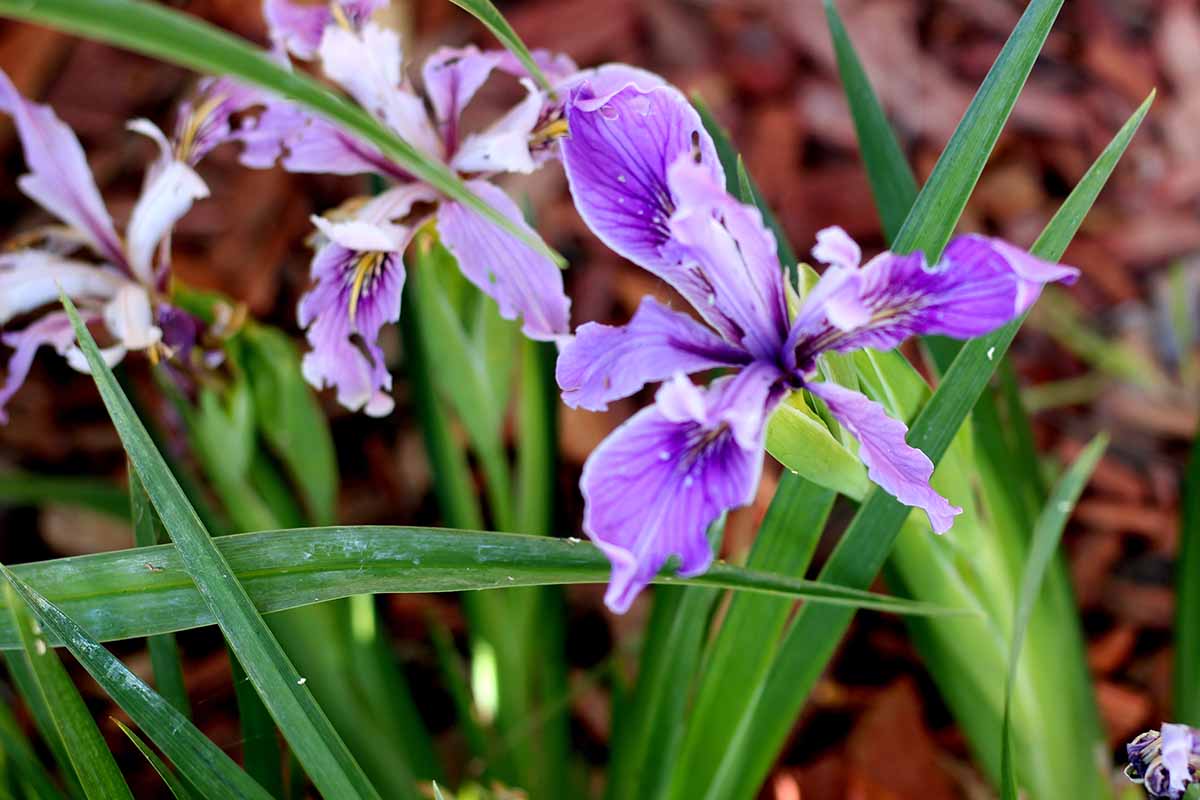
The leaves can be processed to remove the fine, silk-like (but extremely tough) fibers that people used to make fishing nets and rope.
Northern Miwok used the leaves to make baskets, while the Pomo used the leaves to cover acorn meal while it was boiling to release the tannins.
Outsiders often fear or misunderstand plants that they aren’t familiar with. Just look at poor nightshade (Solanum nigrum), an edible and valuable vegetable crop in much of the world that was reviled for some time by Europeans in North America.
As with many plants used by indigenous people, the same goes for I. douglasiana. The roots and seeds are edible if processed correctly, but the plant is often described as highly toxic.
For instance, the Monache and Southern Yokuts harvested the tiny seeds and ground them into flour.
The roots, which have a higher concentration of the toxic compound iridin than the rest of the plant, also have their uses.
For instance, the coastal Miwok tribes used dried roots to make a tea to treat kidney stones and to induce vomiting, while the Modoc used a poultice made from boiled root to treat sore eyes. The Yana chewed on the roots to ease the symptoms of a cough.
The raw rhizome has also been used to make a paste to treat all kinds of skin issues, wounds, and sores.
Before you go chomping on the roots of your own plants, a big old note of caution: In large doses, the fresh rhizome is toxic.
Always, always, always cook the roots if you intend to use them internally, and even then, one should only use a small amount. Remember, the tea is used as an emetic agent.
If you have any doubt about positively identifying the species and how to use it, talk to an expert.
It’s always better to be safe than sorry and some iris species contain more of the toxic compounds than others.
You should also keep the root away from cats and dogs, and add to that the leaves when it comes to livestock.
This plant was originally cultivated using seeds that were taken to England in the late 19th century.
By the early 20th century, growers on the West Coast of the US had started hybridizing plants as well. There are even hybrids with Siberian species (I. sibirica) known as Cal-Sibes.
In the past few decades, mountain irises have been even more extensively cultivated to create some gorgeous cultivars and hybrids. We’ll chat about those coming up.
In the meantime, let’s talk about how to propagate these glorious natives.
Propagation
Douglas irises don’t like being moved or replanted, so find a spot for them and stick with it.
From Seed
You can find seeds for sale all over the place, or you can harvest them off of the plant after the blossoms fade. The seeds should be hard and dry before you harvest them.
Keep the seeds in a dry, cool place until you’re ready to start the germination process, and start the process about three months before the last frost date in your region.
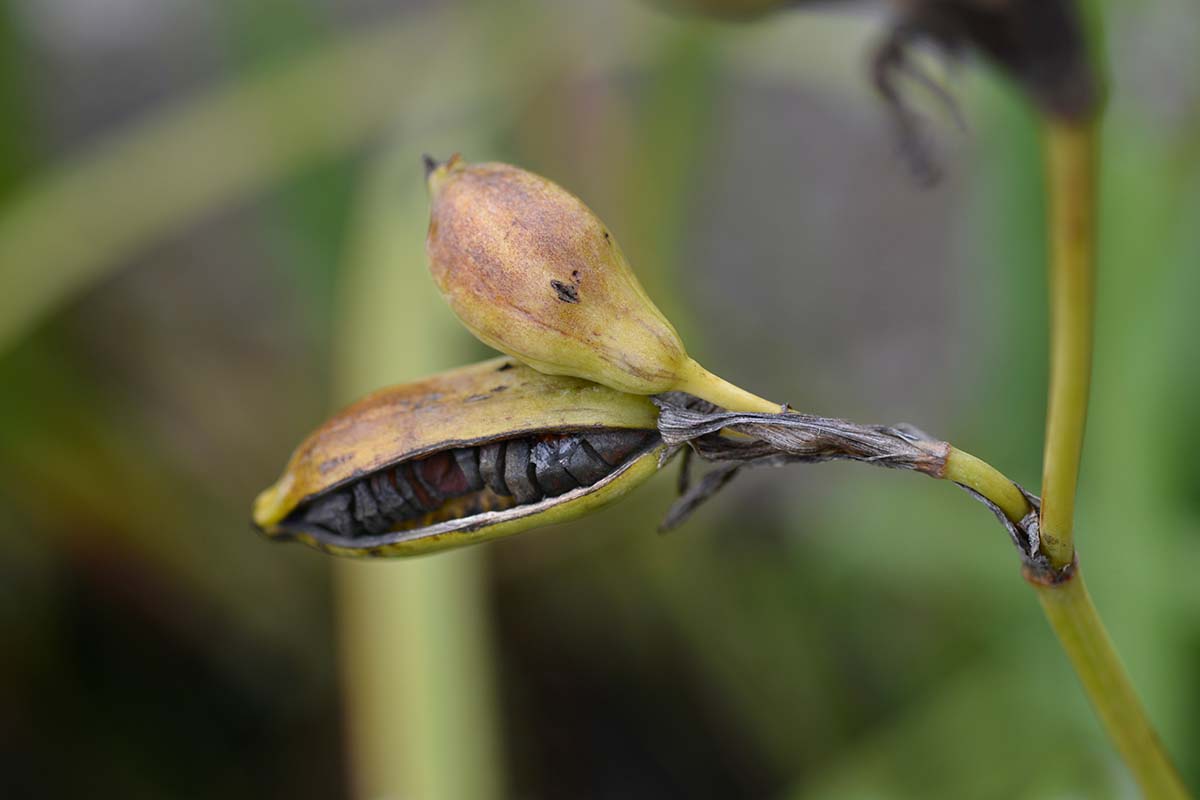
Place the seeds in moist sand mixed with equal parts sphagnum moss in a resealable bag or container. Put the seeds in the refrigerator for two months.
Once the seeds begin to germinate, take them out of the refrigerator and put them in individual four-inch pots filled with potting mix. Because they don’t like being transplanted, use biodegradable pots. That way, there’s less root disturbance for the seedlings.
I’m always singing the praises of Cow Pots. I genuinely love and use them constantly.
They’re made out of a super-renewable resource (cow poop!) and they break down into the soil fairly rapidly, which is nice.
If you’ve ever used a peat pot and found that it hadn’t fully broken down a year or more after planting, you know what I mean.
A pot that doesn’t break down fast enough constrains the plant’s roots and causes irregular growth.
You can find Cow Pots all over the place, including at Arbico Organics, where they carry packs of 12, 180, or 450. I buy the biggest options every few years, that’s how handy these pots are.
Moisten the medium and plant the seeds about a third of an inch deep.
Place the pots somewhere with a little early morning sunlight and bright, indirect light the rest of the day, or under grow lights for four to six hours a day.
Within a month or so the plants should be a few inches tall. Once the last predicted frost date in your region has passed, you can plant your irises in the garden.
Harden seedlings off by putting them in the spot where you intend to transplant for an hour or so, then take them back inside.
The next day, do the same thing, but leave them out for two hours. Keep adding an hour each day until the plants can stay outside for eight hours.
From Rhizomes
Pacific irises are one of the few rhizomes that can be planted in the early spring and will still produce a big display in their first year. Each plant can spread up to four feet, so plan accordingly.
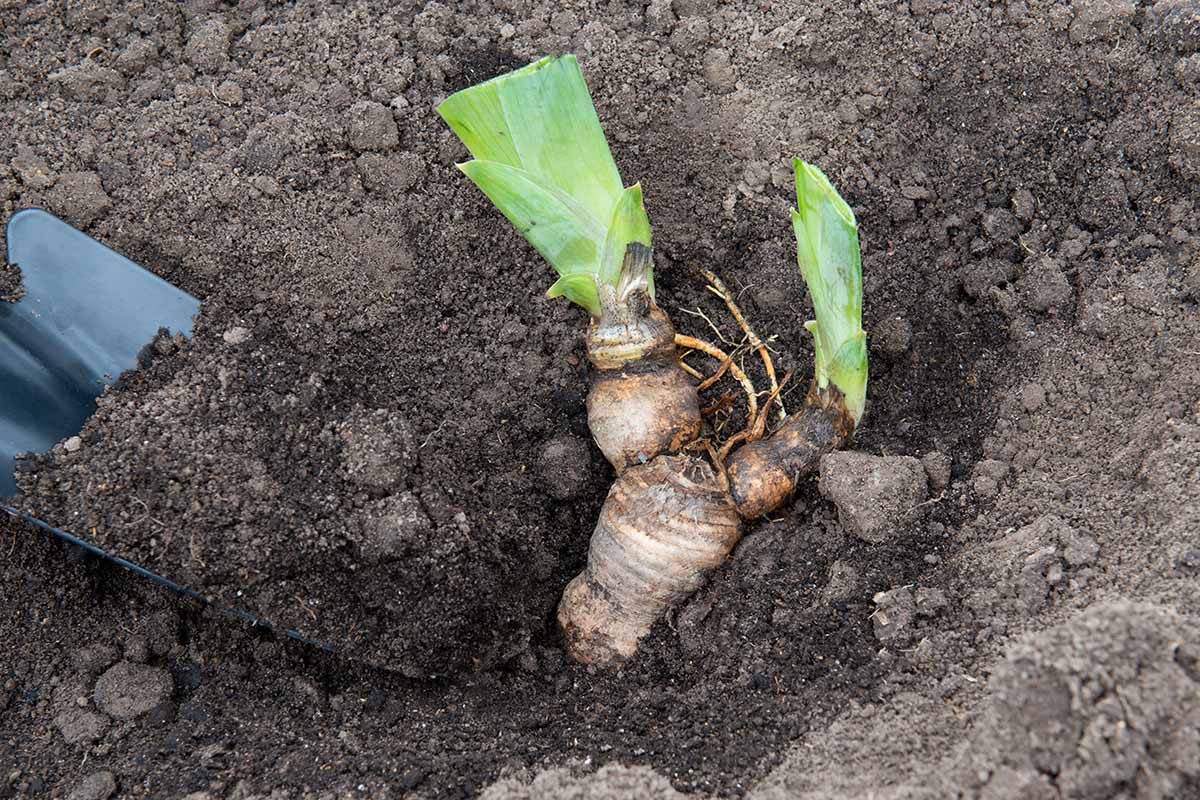
Plant the rhizome in the ground so the top is about half an inch from the soil surface.
If you have extremely heavy clay soil, you can work in some well-rotted compost to loosen things up a little, but it’s not necessary. The only benefit will be that the plant will grow faster.
Water well and keep an eye on the soil for the first few months. It needs to stay moist as the plant emerges and begins growing.
Once it’s six inches tall or so, it can withstand a little drought, but not before then.
Transplanting
Many nurseries throughout the US carry I. douglasiana seedlings, with several cultivars adapted to areas across the country, not just their native range.
It always helps to check out local nurseries rather than national chains because they usually carry the particular cultivars that will thrive in your particular region.
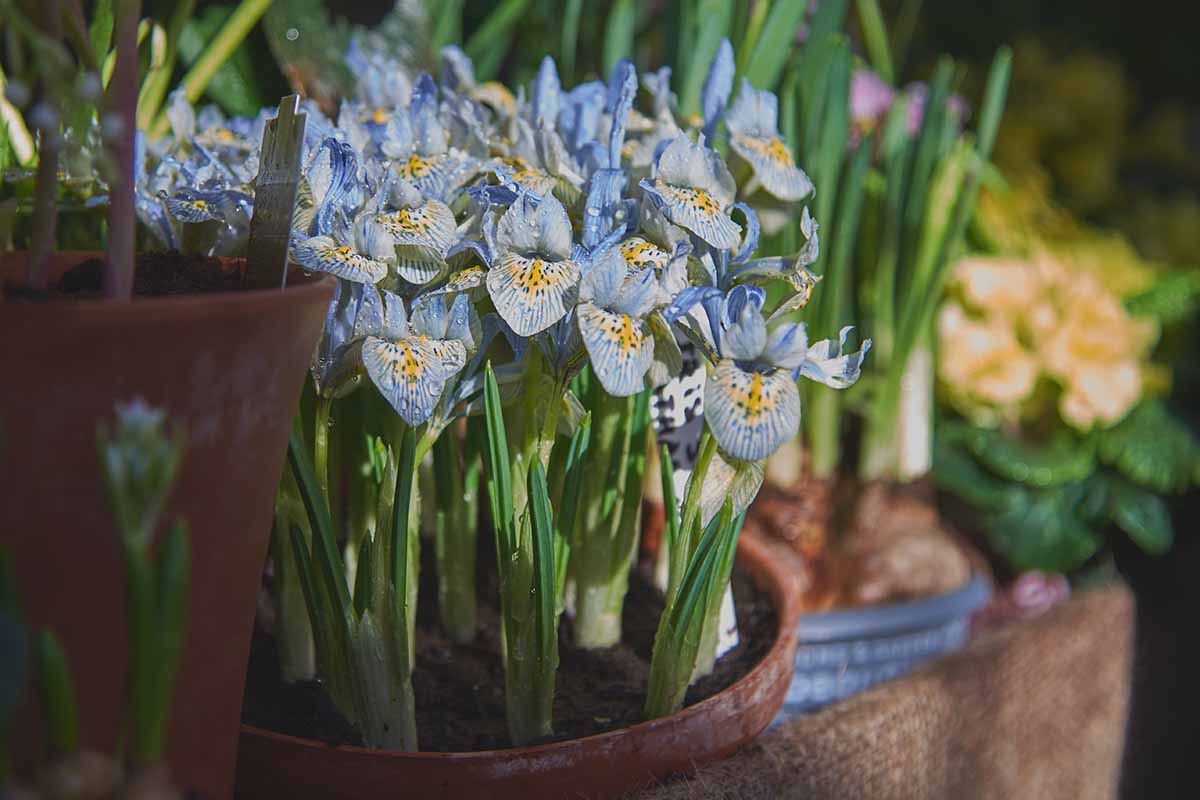
Once you buy your seedlings, the hardest part of your job is putting them in the ground without disturbing the roots too much.
To do this, prepare the soil before planting. Dig the hole and work in any amendments in advance.
The hole should be at least the size of the container, but twice the width and depth is even better. If you have sandy or heavy clay soil, it helps to work in some well-rotted compost.
Then, gently work the seedling out of the pot by pressing the sides and teasing it out. Plant in the hole you made and water well.
From Divisions
Divisions should be done in the fall or winter in temperate regions, after the plant has had a full growing season to develop and fill its roots with food reserves.
So long as the soil is workable, dig down into the plant to lift up a section a foot wide and deep. You should see several rhizomes in the section you dug up.
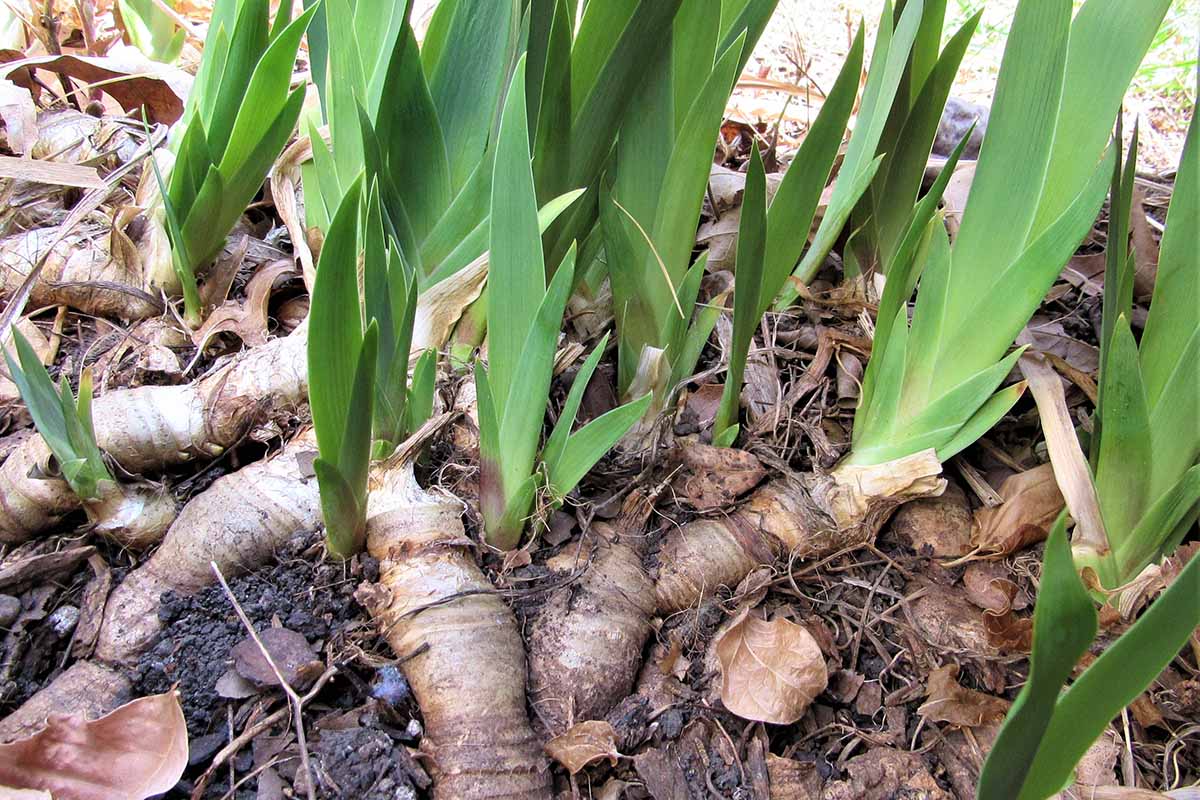
Now it’s time to get dirty and use your hands.
Grab a rhizome and gently pull it away from the rest of the plant. Think of this like pulling a wishbone apart. Each rhizome should gently snap away.
You can keep doing this to break apart as many full-sized rhizomes as you want.
Plant them as described above in the section on rhizomes.
Learn more about dividing and transplanting irises in our guide.
How to Grow
Irises can tolerate anything from full shade to full sun, though they’re better off in partial shade or partial sun. In cooler areas, these irises are more sun- and drought-tolerant than in hot regions.
If you live somewhere hot and dry, plant them in full shade.
On the other hand, if you enjoy a somewhat mild climate year-round, like in the areas where this plant grows naturally, partial sun or partial shade will do.
Those in colder areas, like San Francisco, might need to put their plants in full sun.
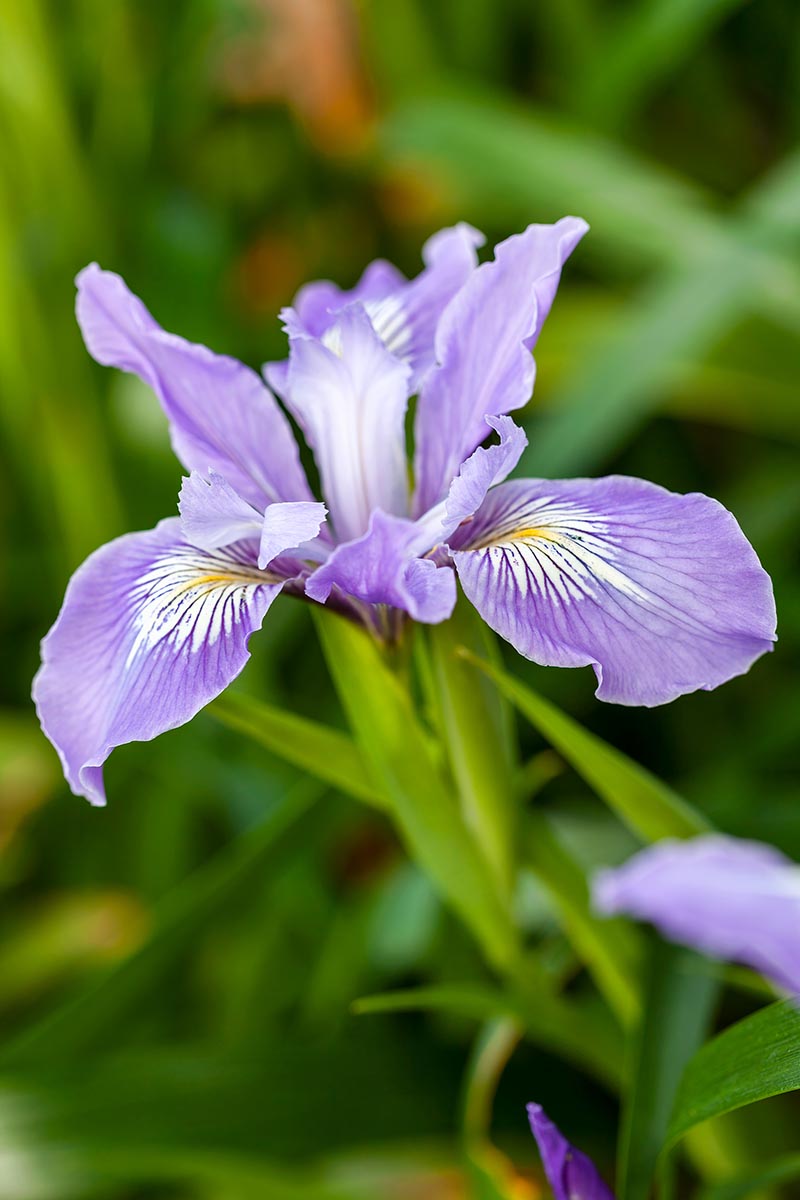
This plant doesn’t do well in sandy or rocky soils. Rich, slightly clayey soil is best.
That’s right, all you clay soil havers can celebrate! There’s a plant out there that doesn’t just tolerate but thrives in the heavy stuff.
If you have a spot where the runoff from your gutters drains, put these there.
You should water these plants all year round if Mother Nature doesn’t do the work for you. They’re the only evergreen iris species in the West and they grow from fall until the summer heat begins, at which point they go dormant.
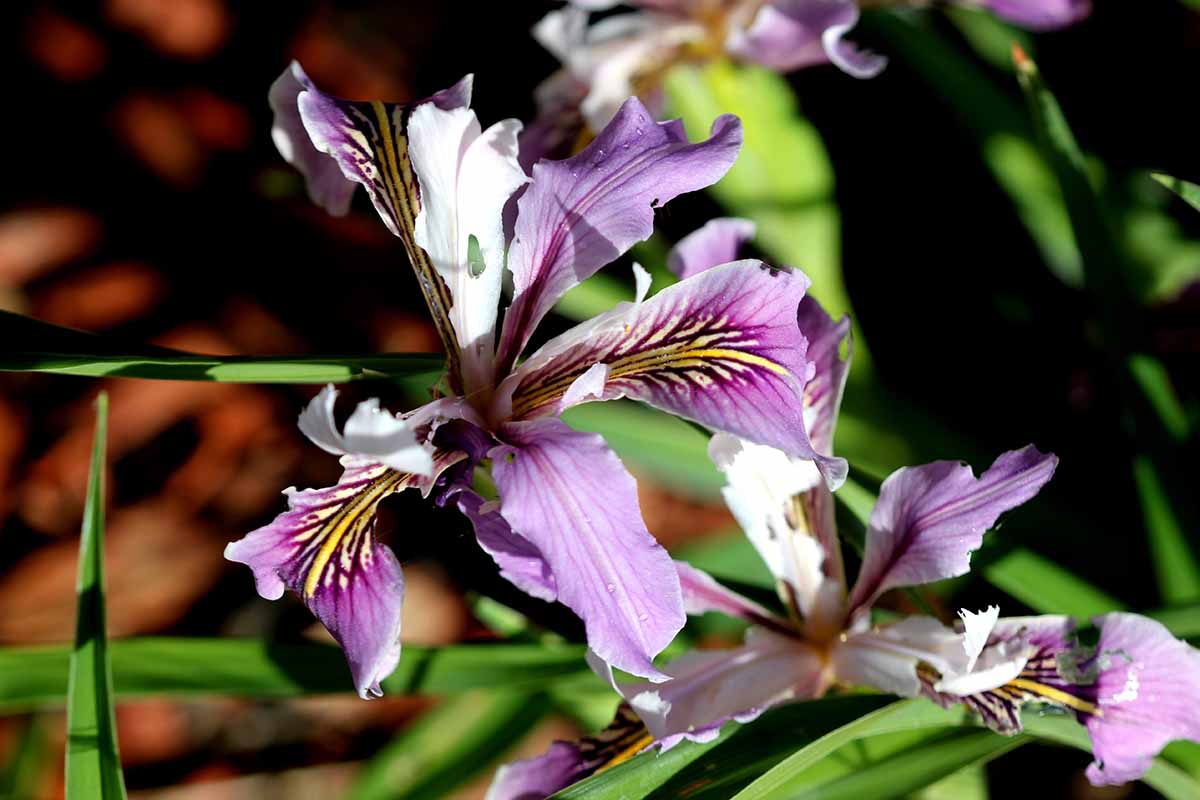
These plants need to be moist in the winter. If you have regular snow cover, that’s good enough. Otherwise, add water if you don’t receive enough rain to keep the soil constantly moist.
In the summer, the soil can dry out between watering, though they’ll tolerate anything from moist to dry soil.
If the water is erratic, either extremely wet or extremely dry, some cultivars or hybrids are especially likely to not bloom, or the blossoms will rot just as they’re beginning to bud if they get too wet for too long.
‘Finger Pointing,’ which is an extremely beautiful white hybrid with deep purple borders and veins, is one such example.
In areas with heavy rain, you might want to use a rain screen over plants that you intend to breed. It’s not so much that you want to protect the flowers, which you do, but to allow bees a safe place to pollinate without being pummeled by rain.
Similarly, if you have a hail storm in the forecast during the spring when the blooms are forming, break those rain screens out.
Most Pacific irises need acidic soil and acidic fertilizer to truly thrive, but of all the Pacific irises, I. douglasiana is totally happy in neutral or even alkaline soil.
That’s one of the many reasons it’s such a favored species among those in the Californicae series.
Growing Tips
- Grow in shadier spots in warm regions.
- Provide consistent irrigation for the best flowering display.
- Plants prefer slightly acidic to neutral soil.
Maintenance
Irises like to spread. They’re good at it.
If you have an enclosed area you want to fill, that’s awesome. But if you have a large field where horses graze or you plant the rhizomes next to a well-manicured lawn, it might be a bit less awesome.
Not only do they spread via underground rhizomes, but the seeds spread as well. Keep an eye on any seedlings that pop up and cull them if they’re small, stunted, or otherwise ugly.
While it’s not necessary, your flowers will grow better if you divide them every three to five years. Do this in the late fall or early spring.
Cultivars to Select
Before we talk type, let’s clarify a few of our terms:
Douglas irises have three outer petals that circle the outside of the flower.
These are the largest petals and they have a blaze of color at the bottom center, called a signal. The smaller petals that sit towards the center of the flower are called the standards.
Blue Plate Special
‘Blue Plate Special’ is just that: special. It has broad, round falls in contrast to the usual oval ones.
It gives the overall impression of a big, round blossom. The falls have yellow and white signals, with light blue standards that feature a deep blue halo and blue veins.
It’s such a looker, and unfussy as can be, that it was named the winner of the prestigious Mitchell Award by the American Iris Society in 2012. Expect flowers as early as the first of April.
Broadleigh Sybil
Featuring medium pink falls with a dark rose halo, and yellow signals with deep purple veins, ‘Broadleigh Sybil’ is eye-catching.
The standards on this hybrid, which are particularly narrow, are a pale rosy-biscuit color.
This cultivar stays fairly short at about a foot tall.
Dracularity
With blood red coloring fringed with a hairline pink rim and nearly black veins, ‘Dracularity’ would easily be The Count’s favorite.
The ruffled petals and black signal just add to this foot-tall plant’s dramatic look.
Bred by Mercer Island, Washington resident and prolific iris hybridizer Deborah Cole, this mid-season bloomer was introduced in 1998.
Drive You Wild
‘Drive You Wild’ has deep violet-red petals with golden signals.
It’s such a sturdy stunner that it won the American Iris Society’s Mitchell Award not once, but twice, in 1991 and 1994, with an honorable mention in 1988.
It’s a mid-season bloomer that reaches 10 inches tall when mature.
Oxymoron
Heavily ruffled petals with neon violet signals and yellow styles are highlighted by coppery-orange falls.
This foot tall plant was bred in 2001 and won the honorable mention from the American Iris Society’s Mitchell Award in 2005.
Vain
You’d be vain, too, if you looked like this iris. The falls are bright yellow with a paler yellow to purple signal and dark orange veins. It’s a reliable bloomer on a foot-tall plant.
Managing Pests and Disease
Good news! Herbivores generally ignore this plant, and snails will only nibble on the flowers, but not the leaves.
In fact, I. douglasiana is so unappealing to most critters that you don’t have to stress about deer or rabbits making a meal of it.
That said, farmers find it a nuisance and try to eradicate it from fields where livestock graze.
Remember, the leaves are toxic to livestock and some grazing animals will take a big bite of forage without realizing that they got a mouthful of something bad.
In years when there isn’t much else to eat, deer will nibble young shoots. But once the plant reaches more than a few inches tall, deer won’t bother it.
You can protect young plants with some mesh or chicken wire temporarily.
If you happen to have mountain beavers (Aplodontia rufa) roaming around your property, you’ll have to be a bit more careful. They love these plants.
Maybe just plant a patch for them near their home and you’ll make the wildlife on your property seriously happy.
Insects
This species is less susceptible to pests than many other species of irises.
While the following pests will look for other species before they’ll feed on I. douglasiana, they will still take advantage of the opportunity for a meal.
Aphids
Aphids are only a real problem in large numbers on young plants.
There are numerous species that will feed on lilies, including purple-spotted (Macrosiphum lilii) and mottled arum aphids (Neomyzus circumflexus).
Aphids are generally small and oval-shaped and like to cluster at the leaf joints and flower buds.
If you see them, or the symptoms they cause, which include yellowing leaves and distorted buds, read our guide to learn how to eliminate them.
Iris Borers
If you live west of the Rockies, go ahead and skip this section.
This pest (Macronoctua onusta) mostly hangs out east of the Rockies in Zones 5a and below, which limits how often Douglas irises are exposed to them.
But if you live in an area where iris borers thrive, this is one of the most common and damaging pests you’ll run into.
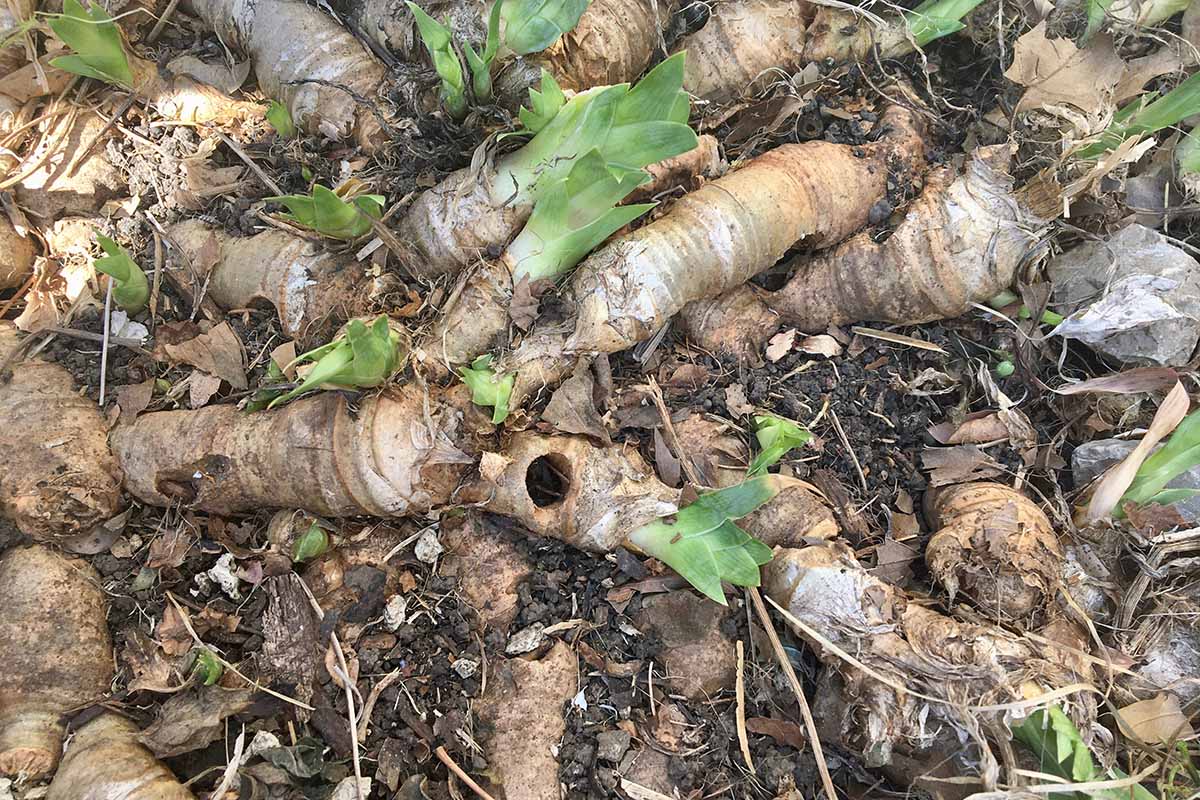
The dull brown night-flying moth isn’t the problem.
It’s the two-inch-long, pink caterpillars that feed on the leaves and tunnel down into the rhizomes, causing yellowing and browning on the leaves and rot on the roots below ground.
Eventually, the leaves will start to become mushy and rot, too.
Your best bet to avoid this pest is to cut down your plants in the fall so there are no leaves for the eggs to hide and mature in.
A beneficial nematode treatment will do wonders if these pests are already present. You’ll need to treat for at least two years to make sure you kill all the caterpillars.
Don’t bother with chemical pesticides. They aren’t really effective and they kill all the good pests that we need to keep around.
Triple Threat Beneficial Nematodes
Grab some beneficial nematodes at Arbico Organics.
They sell a pack with three different species, all of which have been shown to reduce M. onusta populations, in five, 10, 50, 250, or 500 million counts.
Disease
Because this plant is so tolerant of a variety of environmental conditions, it’s better able to withstand the pathogens that attack many other species.
If you plant in a good spot and treat your plant right, it’s unlikely you’ll ever encounter these. But just in case:
Rhizome Rot
If your plants begin to collapse, dig up a rhizome and give it a look. Is it rotten, soft, and brown or black? It’s probably succumbed to the bacteria Pectobacterium carotovorum, which causes root rot.
There isn’t a good treatment available so it’s best to dig up the plant and leave the soil fallow for a year. Don’t compost the debris – toss it in the garbage.
Rust
The fungus Puccinia iridis exists around the globe and attacks all species of iris, but I. douglasiana is often visited by the fungus.
When rust is present, it causes small yellow dots with brown centers. Eventually, with enough spots, a leaf can’t function properly and it dies. If enough leaves die, the plant will, too.
This fungus needs water to thrive, so it looks for plants in shady areas with poor air circulation. If the plants are watered overhead on the foliage rather than at the soil level, even better!
Best Uses
Because these flowers grow compact and low to the ground, you can use them as a ground cover.
They’ll keep spreading until you stop them. They’re also ideal for boggy areas, like where your rain spouts drain or near ponds.
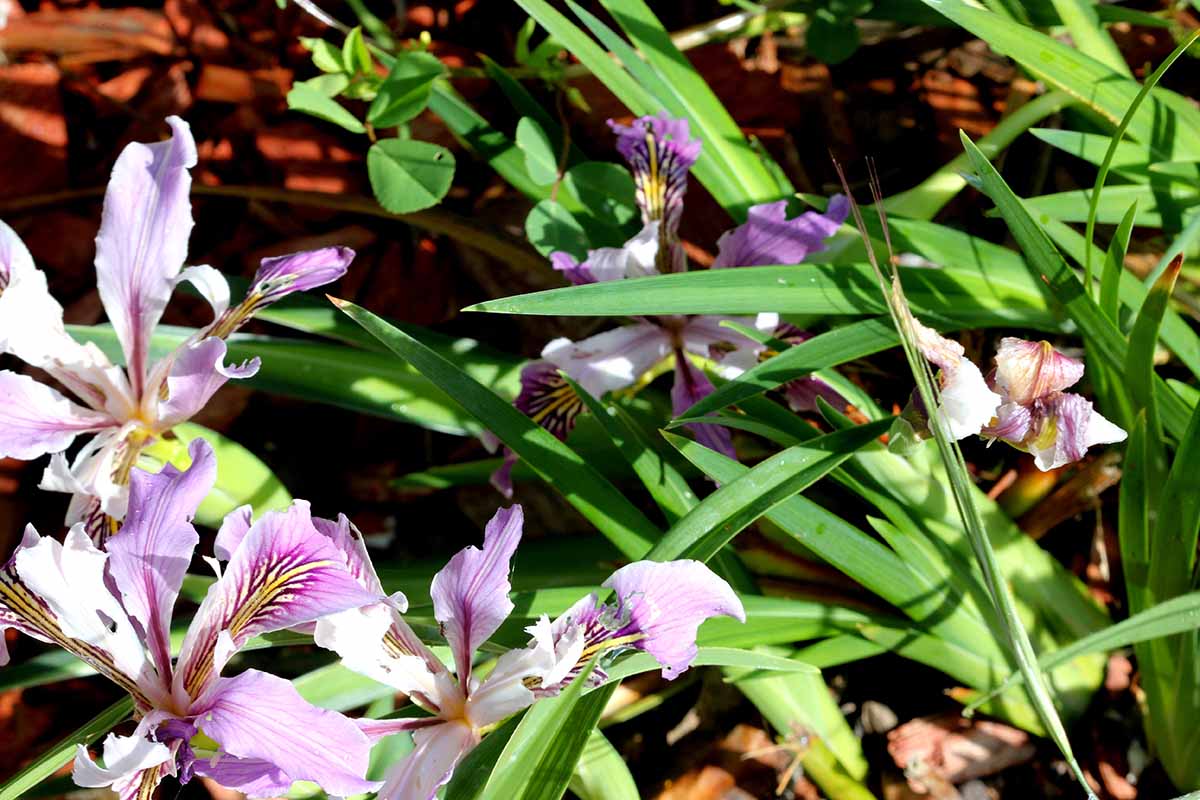
If you’re trying to fill a meadow or wildflower garden, toss some of these in. They even work in rock gardens so long as you provide moisture in the winter and remove rocks from the soil itself.
They can also make a nice, low border for the edge of a garden.
Quick Reference Growing Guide
| Plant Type: | Rhizomatous flowering perennial | Flower / Foliage Color: | White, yellow, pink, orange, purple/green |
| Native to: | North America | Soil Type: | Clay to loamy sand |
| Hardiness (USDA Zone): | 6-10 | Soil pH: | 6.0-7.5 |
| Bloom Time: | Spring, summer, fall | Soil Drainage: | Poor to well-draining |
| Exposure: | Full shade to full sun | Attracts: | Birds, bees, butterflies |
| Spacing: | 2 feet | Companion Planting: | Columbine, lupines, pansies, violets |
| Planting Depth: | 1/3 inch (seed), 1/2 inch (rhizome) | Avoid Planting With: | Plants with low water needs like cacti and succulents |
| Height: | 2 feet | Uses: | Rock gardens, ground cover, wetlands, ponds, meadows |
| Spread: | 4 feet | Family: | Iridaceae |
| Growth Rate: | Moderate | Genus: | Iris |
| Water Needs: | Moderate (winter), low (summer) | Subgenus: | Limniris |
| Maintenance: | Low | Section: | Limniris |
| Tolerance: | Some drought, shade, heavy clay | Series: | Californicae |
| Common Pests and Disease: | Aphids, iris borers; rhizome rot, rust | Species: | Douglasiana |
Elegant Douglas Irises Fill Those Tough Garden Spots
I don’t know about you, but I have a heck of a time trying to fill up the shadier spots in my garden, especially those with clay soil.
And finding something that looks really striking and beautiful? Even more difficult.
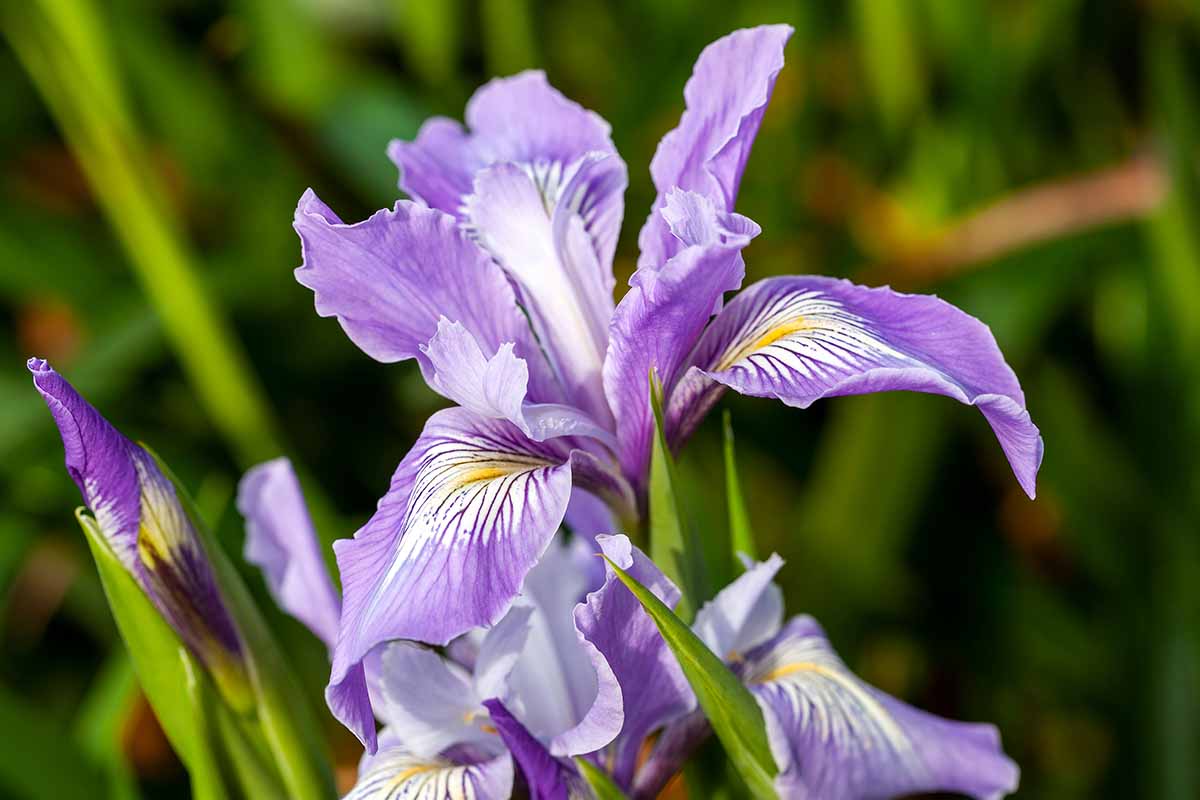
These fit the bill.
Plus, you gotta love a native plant that makes the wildlife in your area happy. You’re welcome, mountain beavers!
I think the biggest challenge with these plants is picking just one or two cultivars. Which ones will you grow? Let us know in the comments.
Ready to expand your iris knowledge? We have several other guides that you might find useful:
